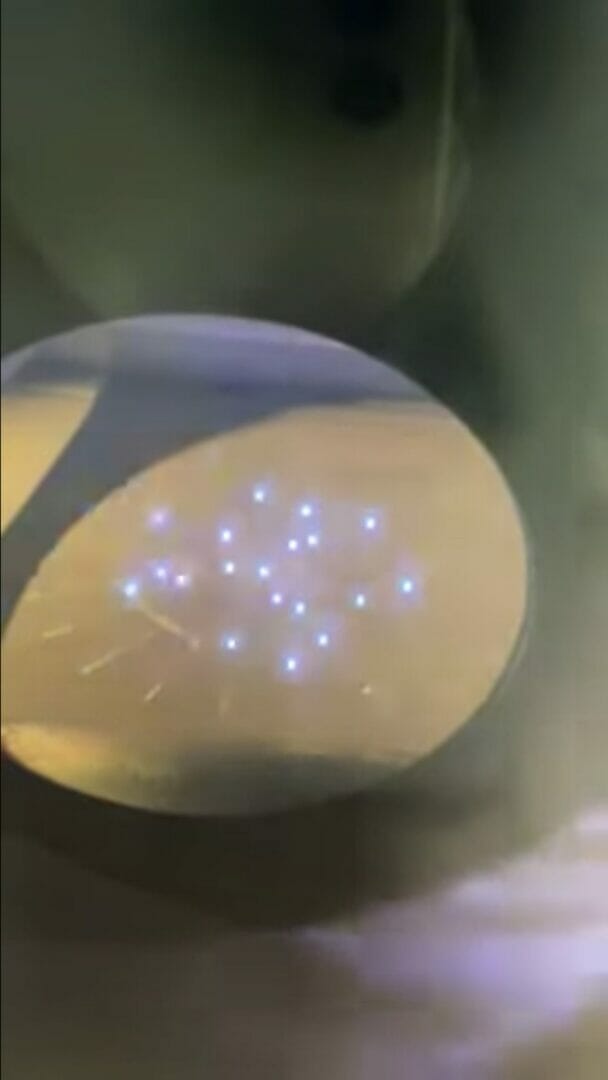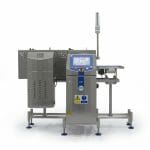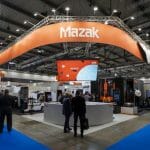(14th October 2021, Huddersfield, U.K.) Wayland Additive will be exhibiting its original and highly effective metal additive manufacturing (AM) system, Calibur3 featuring the NeuBeam® process, at Formnext 2021 taking place in Frankfurt, Germany 16-19th November, 2021. A key feature that attendees will be able to discuss with the team is the proprietary melt strategy that Wayland has developed.
The NeuBeam® process offers a completely new approach to eBeam powder bed fusion (PBF) metal AM technology that represents a big step forward compared with existing PBF systems. The technology overcomes the compromises that most companies have to contend with when using either laser or eBeam PBF metal AM, so design engineers can revisit applications that were previously seen as troublesome or impossible and/or begin development projects with a clearer view of the process and the possibilities that can now be realised.
Neubeam® effectively neutralises the charge accumulation generated by an electron beam. This offers greater flexibility than laser PBF while overcoming the stability issues of eBeam PBF. In addition, this means that the NeuBeam® process enables metallurgical requirements to be tailored to application requirements rather to maintain the print process within the narrow bounds permitted by the process. These process capabilities, along with the greatly improved ease of process development, also opens up the use of a much wider range of metal materials.
There are numerous unique aspects to the NeuBeam® process, the new melt strategy having significant impact on outcomes, and the type and validity of parts that can be produced on Calibur3.
Peter Hansford, Director of Business Development at Wayland Additive says, “Our new proprietary melt pool strategy uses the power and speed of an eBeam more efficiently. eBeams are characterised by their high power and high scanning speed, and at Wayland we have worked on how to best use this power and speed. Our system splits each layer of a part under construction into small zones, and assigns a melt pool to each zone. Our melting strategy is at the same time energy efficient, and by melting different zones in parallel, it allows higher productivity rates regardless of geometry. The power and beam speeds required using traditional melting strategies are incredibly geometry dependent. A common approach has been to dynamically change the energy based on key features of the geometry (overhangs, line lengths, end of line turning points) to maintain accurate geometry and material quality. People using alternative eBeam technologies will be all too familiar with phrases such as ‘turning point function’, ‘thickness function’, ‘speed function’, and ‘current compensation function’, all of which are tuned by lengthy experimentation. This makes the process complicated and non-intuitive for the user, and it is extremely difficult to diagnose the precise cause of problems when they don’t work for particular geometries. At Wayland, we have addressed all of these issues with our new melting strategy.”
See a video of Wayland’s proprietary melt pool strategy HERE.
Will Richardson, CEO at Wayland continues, “Other systems may be able to print some of the same parts as Calibur3, but only after multiple attempts, trial and error, and only with a massive amount of process knowledge which is a huge barrier to entry. Alternative eBeam systems are also inherently unstable due to charge accumulation within the build chamber, which can result in powder scattering or so-called “smoke events” that distort the current layer of the build and therefore compromises the entire build. Our new melt strategy has numerous tangible benefits, key among which are its high productivity (20-40% savings compared to traditional eBeam systems), better consistency over multiple types of geometries, and lower investment and easier calibration when compared to multiple-laser systems. In addition, with the Calibur3 melting strategy there is more control over the thermal history and thus microstructure of the material. The NeuBeam® melting strategy also opens up the possibility of producing fully dense parts in difficult to process materials (such as refractory metals and highly reflective alloys), and of building large and bulky parts.”
NeuBeam® is a hot part process rather than a hot bed process. This efficiently creates parts that are free of residual stresses because the high temperatures are only applied to the part and not the bed, ensuring free-flowing powder post-build (no sinter cake) and stress-free parts with reduced energy consumption. Furthermore, the process overcomes many of the limitations for manufacturing large components – no residual thermal stresses, no gas cross-flow, and a much simpler powder removal process than existing eBeam systems. With Neubeam® there is no need for structural supports (or the use of EDM to remove them), or specific build plates, meaning time and money spent on post-processing is vastly reduced. There are also faster warm-up and shorter cool-down times meaning improved productivity.
The Wayland team will be on hand to discuss the new melting strategy incorporated in the Calibur3 metal AM system at Formnext, and attendees can book meeting slots with the team by using the on-line meeting link HERE.








